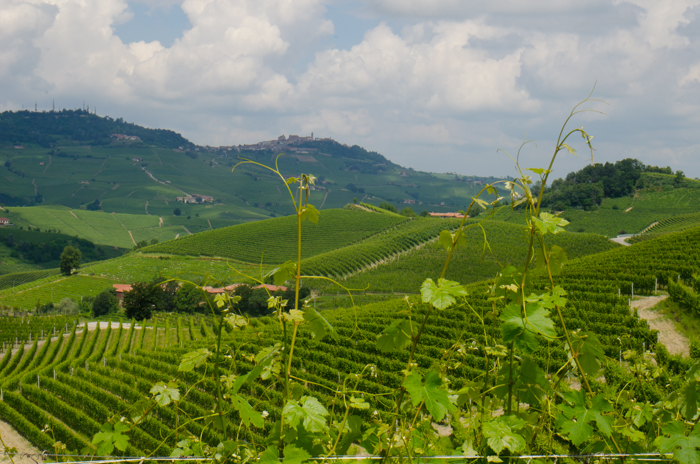
The wines of Barolo are extremely expressive of their picturesque terroir. On our Italiaoutdoors Food and Wine private wine tours of this region, we slow down, and mindfully explore this amazing territory by foot or by bike (electric assist for those who are not a fan of hills). We begin in the northwest area, visiting La Morra, which has younger, sandier soil. Here we taste fruitier Barolo, the more “feminine” with milder tannins, ready to enjoy at a younger age.
We finish the week in southeast, which dates from the Helvetian age, in the commune of Monforte. Here, on our walks through the verdant vineyards, if we can take our eyes off of the spectacular scenery, we notice a crumby, clayey, white-yellow soil that can really stick to our hiking shoes when wet. This tenacious soil produces more intense wines, with increased color, body, and strong tannins that benefit from longer aging.
One of the best wineries to experience the terroir here near Monforte is Costa di Bussia. My knowledgeable guide Erica suggested we begin in the vineyards, which was my preference as well, having seen many a wine cellar. Italian winemakers across the country repeat the phrase “our wines begin in the vineyards”, so of course discovering the story of Costa di Bussia should begin there as well.
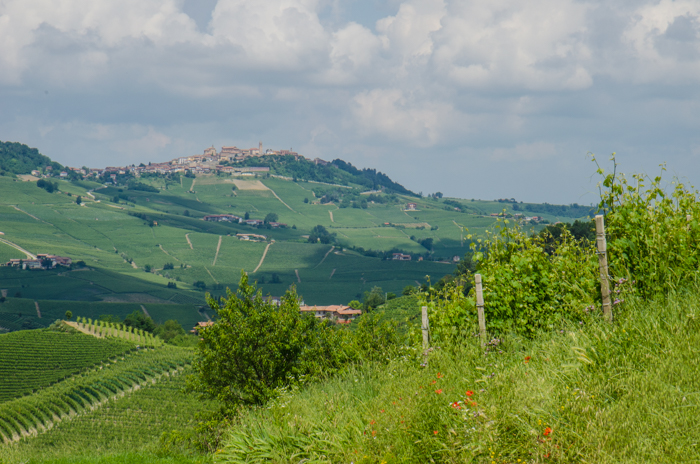
Surrounded by a breathtaking view, with the town of La Morra visible in the distance, Erica gives me the lay of the land. Below us is the Bussia valley, created by the Bussia River, now recognized as a Barolo cru. Millions of years ago, this area was a sea. The waters receded from west to east, so the land that is now Monforte and nearby Serralunga and Castiglione Faletto was the first to emerge. The terrain here is heavy with clay and calciferous material due to the sea shells, which you can still find today. This high level of minerality results in strong wines with pronounced tannins – “male” Barolos – intense, strong, long lived.
The best slopes for these Barolos are the south facing slopes with the optimum sun exposure, important for the late-ripening Nebbiolo. Occasionally they will use the lower elevations of north facing slopes if the sun exposure is adequate, but the top of these slopes are used for the other two indigenous reds, Dolcetto and Barbera, which ripen earlier.
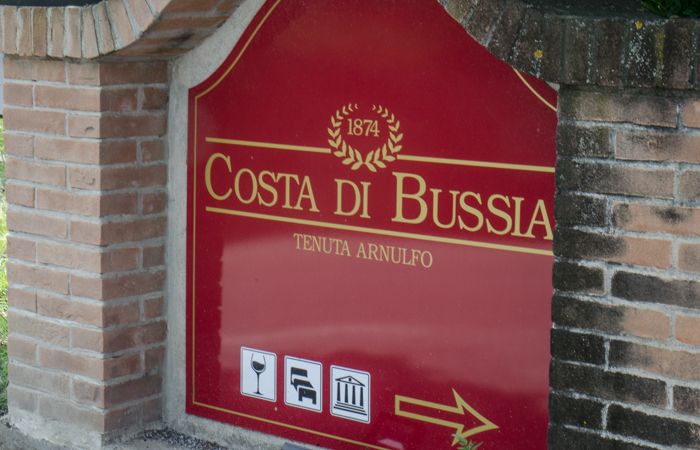
Costa di Bussia was founded in 1874 by Luigi Arnulfo, from a local family of pharmacists. He began producing the native Barolo, and realized the unique terroir of Bussia. Arnulfo is considered one of the pioneers of Barolo production, applying his scientific background to develop tools to analyze the chemical makeup of wine, including alcohol and sugar content. He bottled Barolo in unique square shaped bottles to facilitate long transport; his bottles arrived intact as far away as California, making Barolo one of the first internationally renowned wines. When philoxera threatened to destroy the entire industry in the late 1800s, Arnulfo travelled to France to learn the grafting techniques that saved the grapes from extinction. He died in 1928, and the property fell into disuse until the current owner, Paolo Sartirano purchased it in 1988 and restarted production under the Costa di Bussia name.
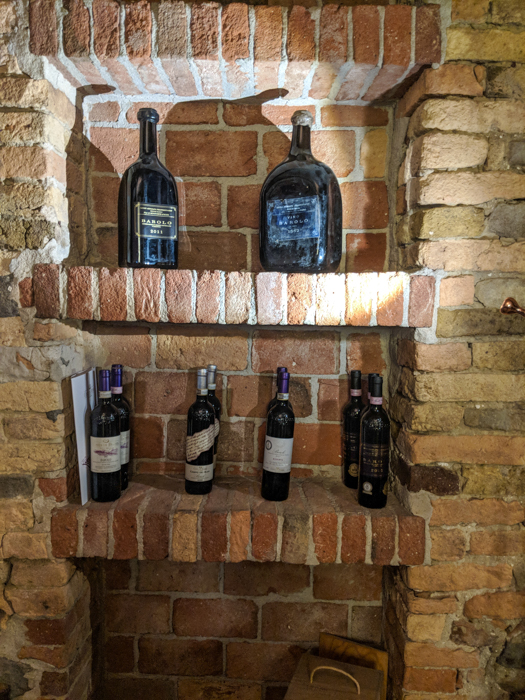
Erica continues, introducing the unique features of their individual vineyards. The original vineyard, located just behind Cascina Arnulfo, is Campo del Gatto – Field of the Cat. Fully facing south, it is located on a “back” where the limestone rich clay marl outcrops provide austere growing conditions. The high percentage of clay here results in wines that are rich in color and structure. From this historical vineyard, they produce one of their two single vineyard wines, their Vigna Campo del Gatto Barbera d’Alba.
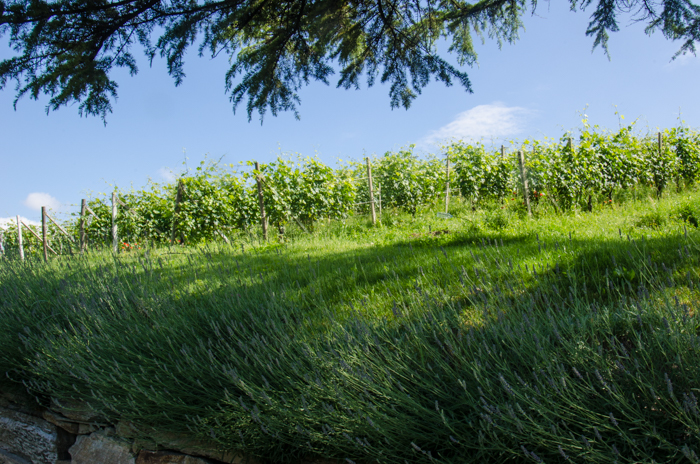
Behind the Campo di Gatto is a second small 1 hectare parcel, the Campo dei Buoi, Field of the Bull. This historical name was mentioned in the purchase document of the original estate signed by Luigi Arnulfo and his father. The soil here has a high percentage of carbonates and other mineral components, such as potassium, phosphorus, and calcium. The southern exposure allows for optimum ripening of the grapes. This is the home of Costa di Bussia’s single vineyard Barolo, Vigna Campo dei Buoi.
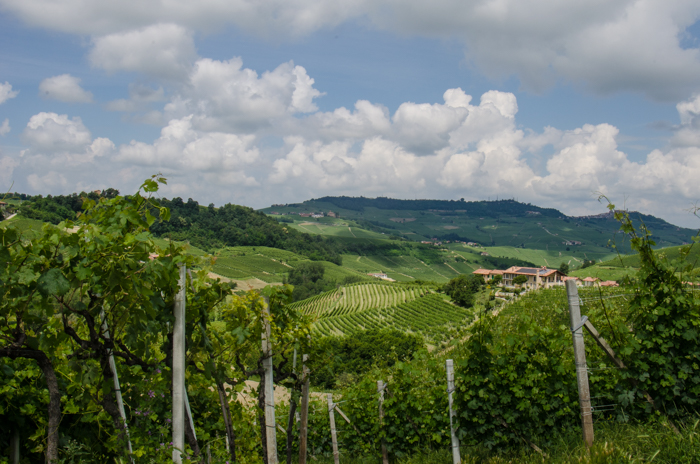
As we follow the winding road past the Campo di Gatto, we look out over the Bussia hill vineyards planted with the prolific Nebbiolo. The Bussia hill boasts a mix of clay and sandstone marls, at times overlapping, alternating, and in parts mixed together, some parts more fertile, others less so. In this mix of soil types, the Nebbiolo grapes mature at different rates, exhibit different aromas and flavors, producing wines with many sensory dimensions. These vineyards are devoted to the production of the Bussia Barolo DOCG, the Langhe DOC Nebbiolo Arcaplà and the Barolo DOCG Luigi Arnulfo.
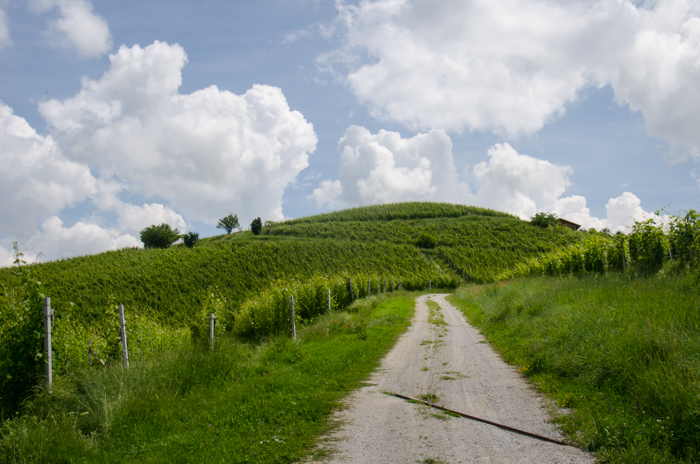
The highest vineyard on the estate is a Nebbiolo vineyard called “Bricco”, with a south-west exposure. Here the vines need to reach deep into the poor marl soil to find the sublayers that are very rich in carbonates and minerals. Costa di Bussia’s most prestigious wine, their Barolo Riserva, hails from here, a wine with powerful structure, tannins and great ageing potential.
Two other vineyard parcels are dedicated to the traditional every day drinking wines of the region, Barbera and Dolcetto. And lone among vineyards devoted to red grapes is a vineyard planted with Chardonnay, an experiment undertaken by Paolo Sartirano in 1992.
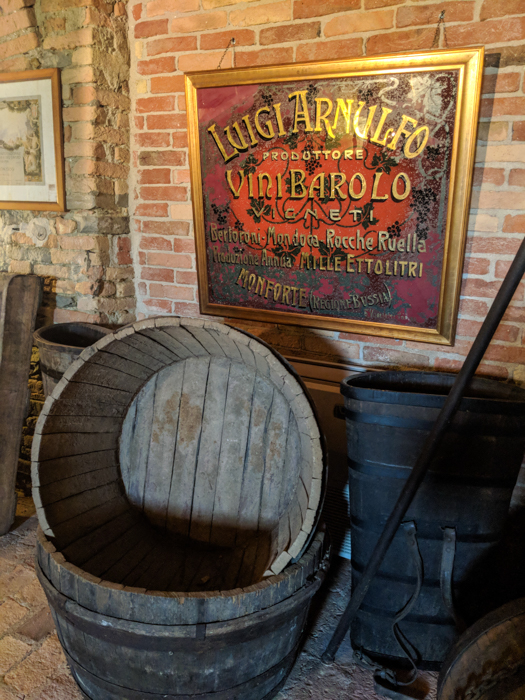
Following our tour of the vineyards, we return to the Cascina where Erica leads me through the wine museum dedicated to Luigi Arnulfo. During renovation of the original farmhouse, Sartirano uncovered over 200 letters and many instruments and other objects from Arnulfo’s time. These artifacts reflect his work in the vineyard and in the winery, his scientific discoveries, new trade routes, and the role the Langhe producers played in the world wide wine industry in the late 1800s. They are now carefully preserved and available for all to learn from in this small, but fascinating museum.
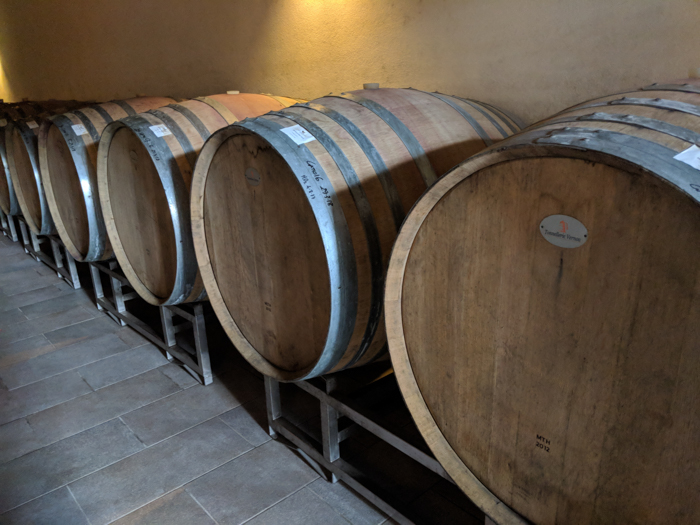
A quick tour of their clean and well-equipped modern production facilities, and then on to the tasting room.
Langhe Chardonnay 2017
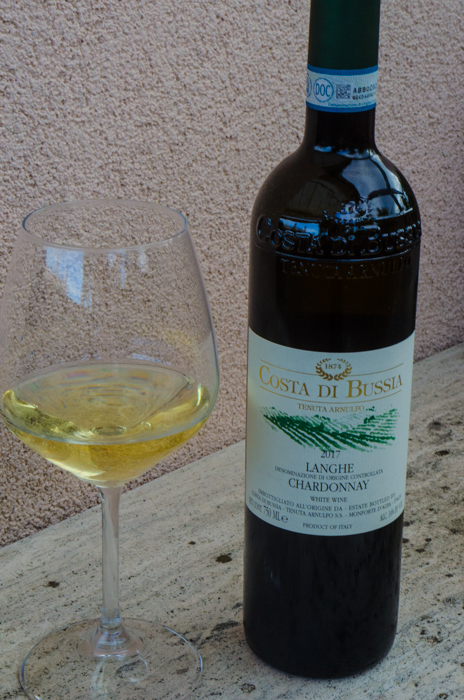
100% Chardonnay, aged 6 months on the lees, this is the result of the owner’s experiment with white grapes in this red-centric region. Non-typical tropical flavors of banana, mango and apricot make for a very fresh and interesting Chardonnay. Persistent finish, with a bit of toasty yeast on the finish. Pair with antipasti, shellfish, risotto.
Langhe Nebbiolo Arcaplà 2014
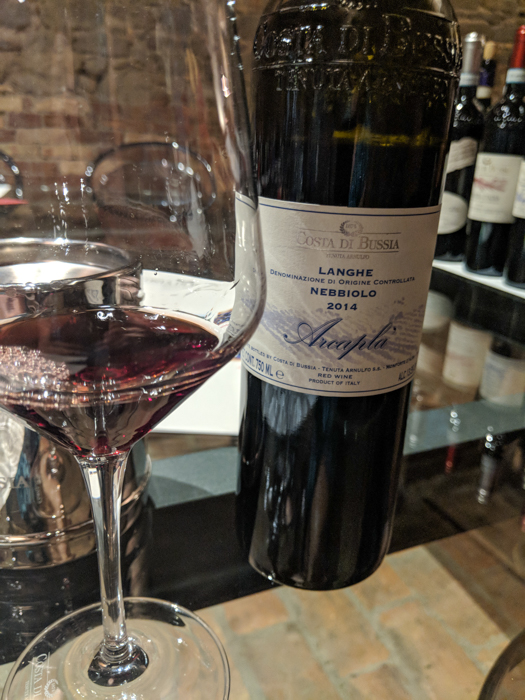
A new wine with vintage 2014, its traditional name comes from its predecessor, the D.O.C. Langhe Red “Arcaplà” with was produced until 2010 using the ancient technique arcaplé, a blend of Nebbiolo (70%) and Barbera (30%). Today, however, it is now a DOC Langhe Nebbiolo produced with 100% Nebbiolo grapes of the estate.
100% Nebbiolo from the Bussia vineyard, aged in small French oak barrels. Deep ruby in color, with scents of vanilla, spice and currants. Elegant mouthfeel, smooth tannins. Enjoy with pastas, roasts, grilled meats, mature cheeses.
Campo di Gatto Barbera 2013
100% single-vineyard Barbera from their oldest vineyard Vigna Campo del Gatto. Aged for 18 months in 500-liter French oak tonneaux. Deep ruby red color with flavors of cherries and wild berries. A note of spice accompanies a persistent velvety finish. Best with roasted or grilled meats, and aged cheeses.
Langhe Freisa 2012
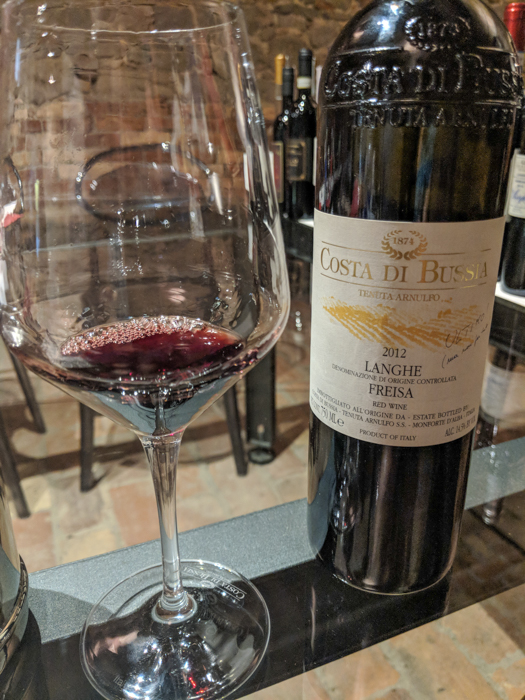
Freisa is a native grape of Piedmont, an offspring of Nebbiolo. Once one of the most planted in Piemont, it is now almost forgotten. Similar to Nebbiolo, Freisa produces wines with considerable tannins and acidity. While it can be used in blends, it is most often encountered as a varietal. Like Nebbiolo, Freisa produces a relatively light colored wine but with more distinctive purple hues. The wines are often characterized with strawberry, raspberry and violet aromas.
This was an interesting wine to try, but alas, time is limited. Costa di Bussia no longer produces Freisa.
Bussia Barolo 2013
100% Nebbiolo from their Bussia cru vineyards. 18 month aging in big Slavonian oak barrels of 5000 litres, then in the bottle. It should age well in your cellar for at least 15 years. Soft ruby red in color, with classic Barolo profile of rose and cherry, and just a hint of spice. Well-balanced, with velvety tannins and persistent finish. Enjoy with game, roasts, aged cheeses.
Bussia Luigi Arnulfo Barolo DOCG 2010
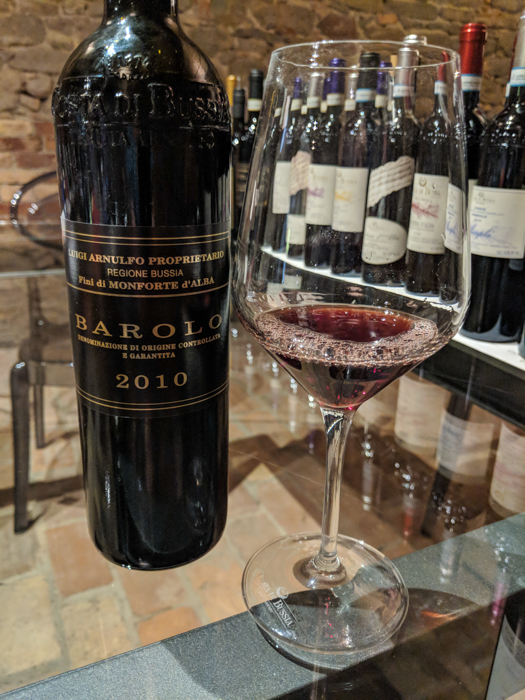
A special selection of only the best grapes, harvested over-ripe, dedicated to Luigi Arnulfo. 36 months of aging in 5000-liter Slavonian oak barrel, then in the bottle. Should be good for at minimum 15 years in the cellar. More intense in color than the Bussia Barolo, with aromas of rose, tobacco and ripe cherry. Smooth and silky tannins, with an exceptional persistence. Appreciate with game meat, braises, and mature cheese.
Luigi Arnulfo Chinato
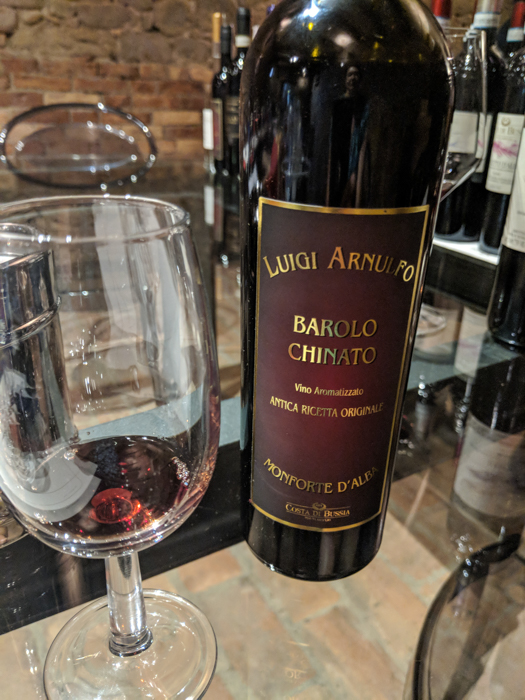
A very interesting dessert wine, unique to Piedmont. A traditional recipe created by Luigi Arnulfo, reflecting his training as a pharmacist. This Barolo Chinato was a special liquor, used in the past as a natural remedy against the cold and flu, as well as malaria, which was one of Italy’s most deadly diseases until the mid-1900s. Barolo Chinato is produced with Barolo wine and with an infusion of spices, roots and medicinal plants such as quinine, hence the name “Chinato”, cloves, rhubarb, mint, cinnamon, and many other ingredients, all written in the original recipe from Arnulfo.
100% Nebbiolo, aged in the bottle. Traditionally drunk after meals as either a digestif or a dessert wine. A distinctive – and very Italian – mix of bitter and sweet, together with the spices, make it quite unique. Enjoy on its own (a wine for meditation, as the Italians would say), or with a bit of dark chocolate.
